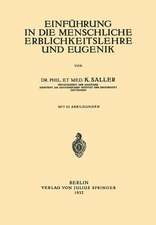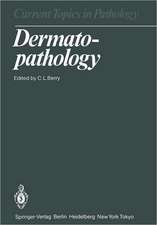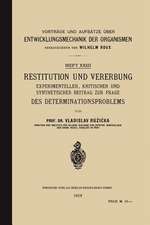Teratology: Trends and Applications
Editat de C. L. Berry, D. E. Poswilloen Limba Engleză Paperback – 11 noi 2011
Preț: 904.82 lei
Preț vechi: 952.43 lei
-5% Nou
Puncte Express: 1357
Preț estimativ în valută:
173.13€ • 180.77$ • 143.29£
173.13€ • 180.77$ • 143.29£
Carte tipărită la comandă
Livrare economică 04-18 aprilie
Preluare comenzi: 021 569.72.76
Specificații
ISBN-13: 9783642661747
ISBN-10: 3642661742
Pagini: 256
Ilustrații: X, 240 p.
Dimensiuni: 170 x 244 x 13 mm
Greutate: 0.41 kg
Ediția:Softcover reprint of the original 1st ed. 1975
Editura: Springer Berlin, Heidelberg
Colecția Springer
Locul publicării:Berlin, Heidelberg, Germany
ISBN-10: 3642661742
Pagini: 256
Ilustrații: X, 240 p.
Dimensiuni: 170 x 244 x 13 mm
Greutate: 0.41 kg
Ediția:Softcover reprint of the original 1st ed. 1975
Editura: Springer Berlin, Heidelberg
Colecția Springer
Locul publicării:Berlin, Heidelberg, Germany
Public țintă
ResearchDescriere
In the fifteen years since the thalidomide disaster teratology has become a science in its own right, distinct from its progenitors, experimental embryology and develop mental biology, but bearing many of the familiar features of both parents. In this growth period there have been contributions from many different scientific disciplines as diverse as molecular biology and obstetrics, which have united in the field of study of congenital malformations. Scientists in academic departments, government research institutes and industrial pharmacology have all explored ways of evaluating the potential of drugs and chem icals to damage the embryo; strict methods of screening for teratogenicity have be come mandatory in most parts of the world. Despite a wealth of basic information in the fields of genetics and embryology, there is little concrete knowledge of the causal mechanisms of malformation in Man, and even less concerning the relevance to Man of those laboratory and animal tests which decide the fate of potentially useful drugs. It is timely, therefore, that in 1975 a group of young and active sci entists and clinicians concerned with the broader implications of teratology should review the past and look to the future of this emerging speciality. In this volume the editors have blended the opinions of teratologists; their message presages change in many of the old and accepted areas of investigative teratology.
Cuprins
New Attitudes to Experimental Teratology.- 1. A Developmental Approach to Teratology.- 2. Chromosomal Animal Model of Human Disease. Fetal Trisomy and Developmental Failure.- 3. Animal Models of Major Gene Defects.- 4. Cytotoxic Agents in Teratogenic Research.- Problems of Predictive Teratology.- 5. Polygenic Models in Teratological Testing.- 6. Behavioural Teratology.- 7. Teratological Investigations in Laboratory Primates: Why, When and How to Use Them.- 8. Screening Medicines for Teratogenicity: Problems of Interpretation.- Influencing the Fetal Milieu.- 9. Placental Causes of Maldevelopment.- 10. Future Prospects for Fetal Surgery.- New Aspects of Developmental Teratology.- 11. Morphological and Behavioural Abnormalities Caused by Insults to the CNS in the Perinatal Period.- 12. Polymorphisms: Their Lessons for Human Teratology.- 13. The Impact of Malformation on the Emotional Development of the Child and his Family.





















